#werner hamacher
Text
Si el lamento es una posibilidad irreductible –en el sentido de un rasgo estructural indisoluble– de toda lengua, entonces incluso en la lengua de la comunicación siempre está obrando algo incapaz de comunidad, algo no-dialógico y carente de lengua, que disuelve las conexiones sociales, se libera de los efectos de su tejido y destruye sus filamentos. El lamento aísla hasta el punto, diminuto hasta la desaparición, en el cual ya no puede ser contado como lamento y ya no puede ser puesto al lado de un segundo ni de un tercer lamento. Es infrasingular y suprageneral, categorial, inaprensible, una lengua no de la determinación, sino de la ausencia de determinación, de propósito, de intención y a limine también de ausencia de voz.
—Werner Hamacher, «Observaciones sobre el lamento» en La detrición de la lengua. Traducción de Niklas Bornhauser Neuber.
8 notes
·
View notes
Text

DogmaTikTok
Das Recht ein Ideal, ein (Vor-)Bild, ein Identifizierungspol, sagt Legendre, schreibt Hamacher (Ich trainiere schon für Wien und alte Meisterakten, Anm. FS).
Legendres Dogmatik baut auf 'Anfängen des griechischen Denkens' auf, nach denen das Bild ein Objekt sein soll, mit dem eine Abwesenheit oder ein Abgrund gemeistert oder bewältigt werden soll. Warburgs Vorstellungen sind andere: das Bild ist ein Objekt, das Kehren händeln (nicht meistern oder bewältigen) soll. Das Bild soll Bewegungen händeln, die polarisiert sind. Legendre richtet ein klassisches, vielleicht sogar archetypisches europäisches Verbot ein, dasjenige der Asebie (Idolatrie?), das insoweit ein Verwechslungsverbot ist: Halt Abstand zu Deinem Bild, verwechsel Dich nicht mit dem (großen) Anderen. Seine Dogmatik ist propaganda fide großer Trennung. Pierre Legendre will Garantien liefern, sogar lebenserhaltende Maßnahmen richtigen Denkens und richtiger Wissensverwaltung ergreifen, von denen er sagt, dass die Alternativen mörderisch seien. Legendre besiegelt das Gesetz. Pierre Legendre schützt ein Monopol, das ist das Monopol des Dritten, jener monumentalen Referenz und jenes monumentalen Subjektes, das den Menschen vor dem Abgrund und von der Abwesenheit abschirmen soll.
Exkurs: Wenn, wie Werner Hamacher schreibt, Legendre gesagt hatte, das Vorbildrecht sei ein Identifizierungspol, dann, so hatte ich mir selbst, noch vor dem Besuch in Wien aber nach demjenigen im Prado notiert, ist das eine in ihrer Selbstüberschätzung grotesk irrsinige Annahme darüber, man besitze ein Monopol in Lagen, die nichts und niemanden zusammenhalten und die einem ein Leben lang nichts anderes vorgaukeln als zusammenzuhalten und auch zusammenhalten müssen zu sollen, wie ja überhaupt alles bei Legendre, das legte Hamacher mit einer an diesem Tag frischen Beiläufigkeit auch noch nahe, notierte ich bei dem erwartungsgemäß übersäuerten und natürlich untrinkbaren Museumskaffee noch dazu, ein einziges, auf andere Weise sauertöpferisches Zusammenziehen französichen Spießbürgertum ist, das sich die Welt nebulös zurechtschrumpft, wie sie ausschließlich in den Ausgeburten eines penälerischen und pedantischen Schwiegersohnes, der sich noch einbildet an der Ecole National und bei dem katholisch so verbohrten wie verstiegenen Liebling der sogenannten Pariser Gesellschaft Lacan seine Zeit verbracht und seine Lektion gelernt gehabt zu haben, verkleinert und zum Wurm gemacht werden kann [Bernhardmimesis ist easier said than done, das muss gründlicher geübt werden, Anm. FS]
2.
Aby Warburg betreibt hingegen (Ver-)Wechselwissenschaft und Kreditgeschäft, eine vergleichende Normwissenschaft zum Ansehen. Man muss sich den Stil Warburgs eher wie einen Film vonJacques Tati als einen Text von Louis Marin vorstellen. Warburg geht es eher um ein Ohnehin, ein Durchkommen, um Nachvollziehbarkeiten und Übersetzbarkeiten, nicht um Verhinderungen und nicht um lebenserhaltende Maßnahmen, schon gar nicht um Garantien.
Die Referenzen kehren, drehen, wenden, sie kippen und beugen, sie falten und wogen, sie scrollen und schlängeln sich, sie wandern, schaukeln und schwingen, da ist kein Halten. Das ist kein Monopol, da ist was stereopol, bipolar, multipolar - und die Kehren eiern unausgewuchtet und doch fruchtbar durch Raum und Zeit. Sie schaffen keine großen Bögen, von denen man glauben könnte, dialektische Linien zu sein. Warburgs Spiralen schwindeln.
2 notes
·
View notes
Photo
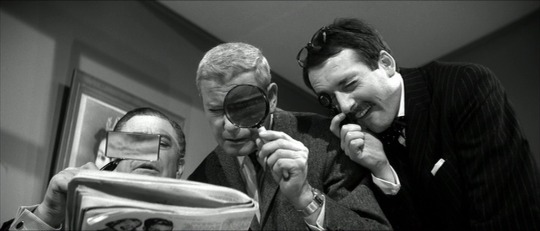

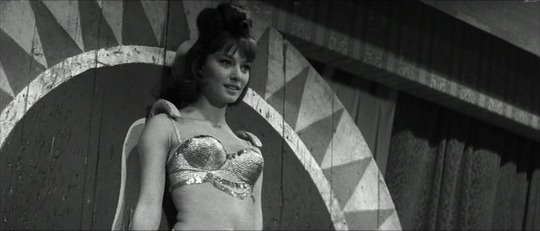
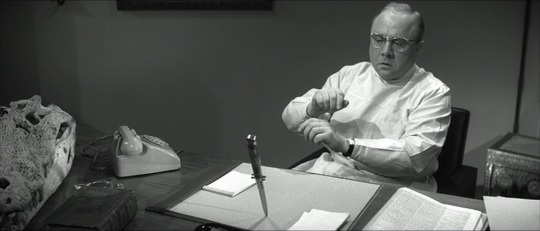
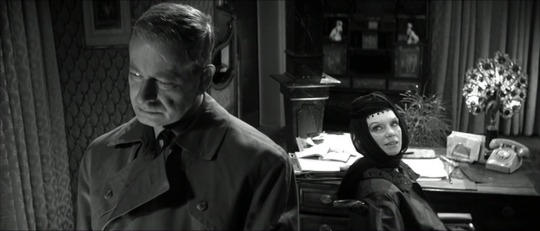
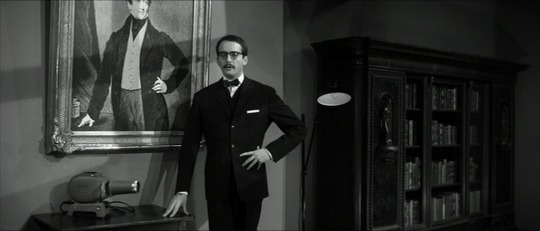
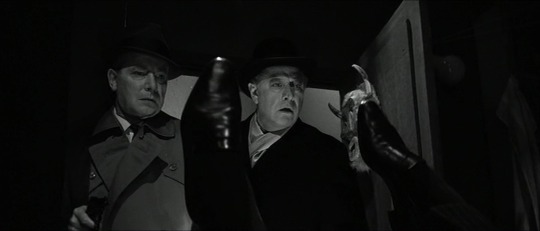
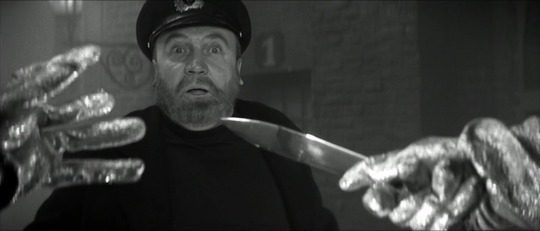
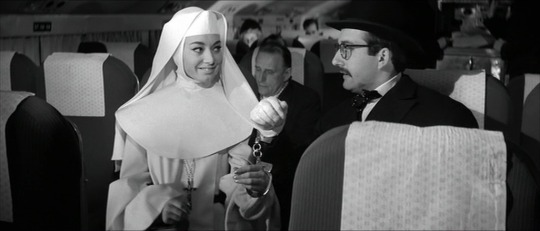
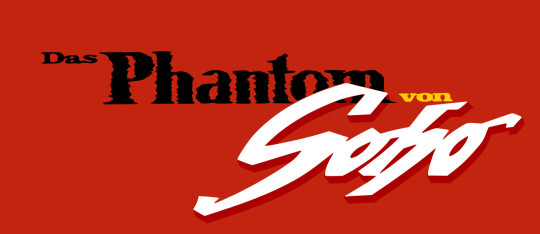
Das Phantom von Soho | Franz Josef Gottlieb | 1964
#Franz Josef Gottlieb#Das Phantom von Soho#1964#The Phantom of Soho#Hans Söhnker#Dieter Borsche#Peter Vogel#Helga Sommerfeld#Werner Peters#Elisabeth Flickenschildt#Hans W. Hamacher
26 notes
·
View notes
Text


Magazine Diaphanes _ 11 Surrogacies out now Redaktion: Marie Glassl, Michael Heitz, Hednrik Rohlf
Myths and visions of motherhood and fathering, brings together artistic and theoretical positions on reproduction and communication, gender and genus, addressing and conception.
DIAPHANES 11 orbits around the “ambiguities of the maternal significate” (Kittler) and speculates about the idea of humanity as an “absolute family”(Novalis).
This issue explores practices of human and non-human substitution, plays with the myths and visions of motherhood and procreation, gathers artistic and theoretical positions on reproduction and communication, gender and genus, addressing and conception.
What claims the place of the nuclear family in the face of hybrid kinships and social freezing? What could new elective kinships be in times of chatbots and pseudonymisation? Is this the time for surrogate mother tongues and extra-human rhetorics of surrogation?
Sophie Lewis claims a gestational communism and hunts our grannies. Barbara Vinken reflects on spiritual motherhood, Luciana Parisi on human automata and gendered proxies. For Zuzana Cela, language is a foreign body that can be invaginated. Werner Hamacher strolls through mother museum, which is also a brothel. Arantzazu Saratxaga Arregi discovers the evolutionary disobedience of the girl and Thierry de Duve a completely different pleasure with Joseph. Rudi Nuss tells of the new love for pregnant men, Allison Grimaldi Donahue of bad kinship in the house of language, M. NourbeSe Philip of a foreign fear. Leda Bourgogne, Lucile Boiron, Lena Kunz and Emma Waltraud Howes occupy the place of these attributions with their images.
3 notes
·
View notes
Text
“The funnel which the moon formed in arriving sucked everything into itself" (IV. I , 302)
Yet this remnant of language, which collects into the question as if it were the hunchback of the little man from the children's verse of Scherer, is still always the half-world-the world as it appears in dreams and under the aspect of likeness. In the half-world the nothing- ness of being is dreamed, yet this dream is itself, as a barrier, raised up before it. The question concerning the ground of the world is the index of its possible groundlessness, but as this question, it still holds to the possibility that there is a ground. Thus, during its second appearance in the same text, the moon appears ambiguously as the catastrophic promise of a new world into which the child thinks to enter with a Romantic's verse. The moon, der Mond, which makes everything stop speechless, having been transformed into a voracious mouthein Mund-that dismembers the ramparts of the balcony and all the bodies on it, sucks the entire world into itself: "The funnel which the moon formed in arriving sucked everything into itself" (IV. I , 302). But greater than the success incumbent upon a new world-domination by so ambiguous a moon is the threat of violence that goes along with its oral authority. It is the threat of that self-annihilation and that nothingness which the question concerning the ground of the world has still withheld. During the dream of a mouth that destroys without ever speaking, nothingness breaks through its enclosure and awakens....
11 notes
·
View notes
Text
‘The languages of knowledge are grounded in languages of nonknowledge,
epistemic practices in those of the euche: ontology in philology.’
--Hamacher, Minima Philologica, trans. Catharine Diehl
3 notes
·
View notes
Photo
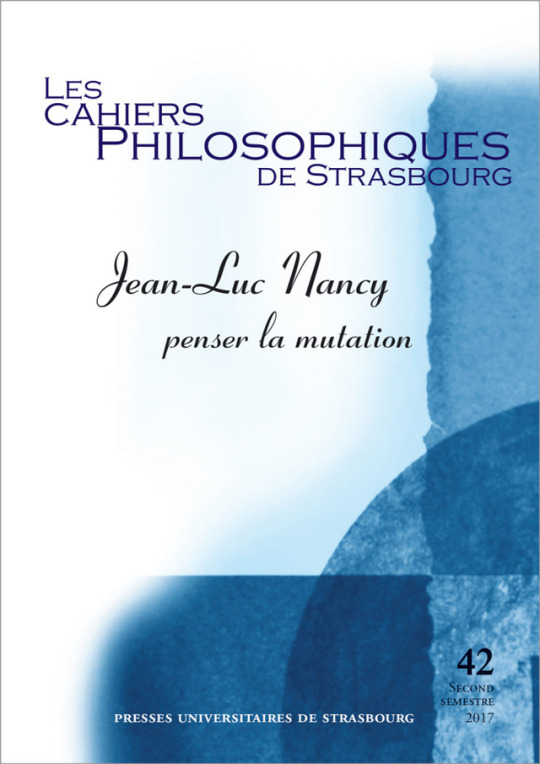
Jean-Luc Nancy : penser la mutation
Les Cahiers philosophiques de Strasbourg n°42/2017
Édité par Jérôme Lèbre, Jacob Rogozinski
Date de parution : nov. 2017
Jean-Luc Nancy, Werner Hamacher, Boyan Manchev, Yuji Nishiyama, Danielle Cohen-Levinas, Isabelle Alfandary, etc.
Notre monde est en pleine mutation et l'humanité mute elle aussi. Ces deux expériences du contemporain sont devenues de plus en plus insistantes dans la pensée de Jean-Luc Nancy et font le lien entre sa pensée du corps et sa pensée de l'histoire. Ce volume réunis des contributions présentées à l’occasion du premier colloque international qui s’est tenu autour de ce philosophe strasbourgeois de renommée mondiale. Selon le souhait de Jean-Luc Nancy, les intervenants ont gardé dans leur texte une attention constante à ce présent qui fait plus que changer.
Ce numéro de revue concerne les lecteurs, universitaires ou non, intéressés par la philosophie, la littérature, l’art, l’histoire et la théologie.
8 notes
·
View notes
Text
Crisis and Critique
What is critical theory, and whence the notion of critique as a practical stance towards the world? Using these questions as a point of departure, this course takes critical theory as its field of inquiry. Part of the course will be devoted to investigating what critique is, starting with the etymological and conceptual affinity it shares with crisis: since the Enlightenment, so one line of argument goes, all grounds for knowledge are subject to criticism, which is understood to generate a sense of escalating historical crisis culminating in a radical renewal of the intellectual and social order. We will explore the efficacy of modern critical thought, and the concept of critique’s efficacy, by examining a series of attempts to narrate and amplify states of crisis – and correspondingly transform key concepts such as self, will, time, and world – in order to provoke a transformation of society. The other part of the course will be oriented towards understanding current critical movements as part of the Enlightenment legacy of critique, and therefore as studies in the practical implications of critical readings. Key positions in critical discourse will be discussed with reference to the socio-political conditions of their formation and in the context of their provenance in the history of philosophy, literature, and cultural theory. Required readings will include works by Kant, Hegel, Marx, Nietzsche, Freud, Husserl, Benjamin and others, with suggested readings and references drawn from a variety of source materials ranging from literary and philosophical texts to visual images, film, and architecture. You are invited to work on your individual interests with respect to the readings.
Week 1
Critique, krinein, crisis (Koselleck, Adorno)
Required Reading
Reinhart Koselleck, “Crisis,” Journal of the History of Ideas 67.2 (2006), 357-400.
—, Chapters 7 and 8, Critique and Crisis: Enlightenment and the Pathogenesis of Modern Society. Cambridge, MA: The MIT Press, 1988 [German original, 1959].
Adorno and Horkheimer, "The Concept of Enlightenment," in Dialectic of Enlightenment, trans. John Cumming (New York: Continuum, 1989), pp. 3-42.
Recommended Reading
Michel Foucault, “What is Enlightenment?” in The Foucault Reader. New York: Pantheon Books, 1984: 32-50.
—, The Politics of Truth. New York: Semiotext(e), 1997.
Friedrich Hölderlin, “Nature and Art or Saturn and Jupiter,” in Hyperion and Selected Poems. Ed. by Eric Santner. Translated by Michael Hamburger. New York: Continuum, 1990: 150-151.
Week 2
Judgment and Imagination (Kant)
Required Reading
Immanuel Kant, “Preface [A and B],” in Critique of Pure Reason. Translated and edited by Paul Guyer and Allen W. Wood. Cambridge: Cambridge University Press, 1998: 99-124.
—, “Preface” and “Introduction,” in Critique of Practical Reason, in Practical Philosophy, trans. Mary Gregor (Cambridge UP, 1996), pp. 139-149.
—, §§1-5, 59-60 of Critique of the Power of Judgment, trans. Paul Guyer and Eric Matthews (Cambridge UP, 2000), pp. 89-96, 225-230.
—, “Idea for a Universal History with a Cosmopolitan Purpose,” in Kant: Political Writings. Cambridge: Cambridge University Press, 1991 (2nd ed.): 41-53, 273.
—, “An Answer to the Question: What is Enlightenment? [1784],” in Practical Philosophy. Translated by Mary J. Gregor. Cambridge: Cambridge University Press, 1999: 11-22.
Recommended Reading
Immanuel Kant, "Analytic of the Sublime," in Critique of Judgment. Translated by James Creed Meredith; revised, edited, and introduced by Nicholas Walker. Oxford: Oxford University Press, 2007: 75-164.
Theodor Adorno, Kant’s Critique of Pure Reason (2001 [1959])
Henry Allison, Kant’s Transcendental Idealism (2004)
Hannah Arendt, Lectures on Kant’s Political Philosophy (1992)
Geoffrey Bennington, “Kant’s Open Secret”, Theory, Culture and Society 28.7-8(2011): 26-40.
J.M. Bernstein, The Fate of Art: Aesthetic Alienation from Kant to Derrida and Adorno (1992)
Graham Bird, The Revolutionary Kant (2006)
Andrew Bowie, Aesthetics and Subjectivity: from Kant to Nietzsche (1990, 2003)
Howard Caygill, The Kant Dictionary (2000)
Ernst Cassirer, Kant's Life and Thought (1981)
Gilles Deleuze, Kant's Critical Philosophy (1984)
Will Dudley and Kristina Engelhard (eds.) Immanuel Kant: Key Concepts (2010)
Paul Guyer, Kant’s Critique of the Power of Judgment: Critical Essays (2003)
Martin Heidegger, Phenomenological Interpretation of Kant’s Critique of Pure Reason (1997)
Laura Hengehold, The BODY Problematic: Political Imagination in Kant and Foucault (2007)
Otfried Höffe, Immanuel Kant (1994)
Jean-François Lyotard, L’Enthousiasme: La critique kantienne de l’histoire. Paris: L’Éditions Galilée, 1986.
Rudolf Makkreel, Imagination and Interpretation in Kant: The Hermaneutic Import of the Critique of Judgment (1990)
Jean-Luc Nancy, A Finite Thinking (2003)
Andrea Rehberg and Rachel Jones (eds.), The Matter of Critique: Readings in Kant’s Philosophy (2000)
Philip Rothfield (ed.), Kant after Derrida (2003)
Rei Terada, Looking Away: Phenomenality and Dissatisfaction, Kant to Adorno (2009)
Yirmiahu Yovel, Kant and the Philosophy of History (1989)
Week 3
Recognition and the Other (Hegel)
Required Reading
G.W.F. Hegel, “The Truth of Self-Certainty” and “Lordship and Bondage,” in The Phenomenology of Spirit. Translated by Terry Pinkard. Cambridge: Cambridge UP, 2018: 102-116.
—, “The Art-Religion,” in The Phenomenology of Spirit. Translated by Terry Pinkard. Cambridge: Cambridge UP, 2018: 403-430.
Recommended Reading
G.W.F. Hegel, Introduction [§§1, 2, 3, 5, 6 and 8], in Aesthetics: Lectures on Fine Art. Translated by T.M. Knox. Oxford: Clarendon Press, 1975: 1-14; 22-55; 69-90.
Stuart Barnett (ed.), Hegel after Derrida (2001)
Frederick Beiser (ed.), The Cambridge Companion to Hegel (1993)
Susan Buck-Morss, Hegel, Haiti, and Universal History (2009)
Rebecca Comay, Mourning Sickness: Hegel and the French Revolution (2011)
Rebecca Comay and John McCumber (eds.), Endings: Questions of Memory in Hegel and Heidegger (1999)
Eva Geulen, The End of Art: Readings in a Rumor after Hegel. Stanford, CA: Stanford University Press, 2006.
Werner Hamacher, “(The End of Art with the Mask),” in Stuart Barnett (ed.), Hegel after Derrida. London and New York: Routledge, 1998: 105-130.
Werner Hamacher, “The Reader’s Supper: A Piece of Hegel,” trans. Timothy Bahti, diacritics 11.2 (1981): 52-67.
H.S. Harris, Hegel: Phenomenology and System (1995)
Stephen Houlgate, An Introduction to Hegel: Freedom, Truth and History (2005)
Stephen Houlgate, Hegel’s Phenomenology of Spirit (2013)
Fredric Jameson, The Hegel Variations (2010)
Alexandre Kojève, Introduction to the Reading of Hegel. Lectures on the Phenomenology of Spirit. Ithaca: Cornell University Press, 1980.
Terry Pinkard, Hegel: A Biography (2001)
Week 4
Revolution … (Marx)
Required Reading
Karl Marx, “I: Feuerbach,” The German Ideology, in Collected Works vol. 5. London: Lawrence and Wishart, 1976: 27-93.
Karl Marx, "Theses on Feuerbach," available online (http://www.marxists.org/archive/marx/works/1845/theses/theses.htm)
Week 5
... and Repetition (Marx)
Required Reading
Karl Marx, “Preface” to A Contribution to the Critique of Political Economy [1859], in Collected Works vol. 29. London: Lawrence and Wishart, 1976: 261-165.
—, “Postface to the Second Edition” and “Chapter 1: The Commodity,” in Capital: A Critique of Political Economy. Trans. by B. Fowkes. London: Penguin, 1990: 95-103 and 125-177.
Recommended Reading
Louis Althusser, For Marx (1969)
Hannah Arendt, “Karl Marx and the Tradition of Western Political Thought”, Social Research 69.2 (2002): 273-319.
Étienne Balibar, The Philosophy of Marx (1995, 2007)
Ernst Bloch, On Karl Marx (1971)
Andrew Chitty and Martin McIvor (eds.), Karl Marx and Contemporary Philosophy (2009)
Simon Choat, Marx Through Post-Structuralism: Lyotard, Derrida, Foucault, Deleuze (2010)
Jacques Derrida, Specters of Marx: The State of the Debt, the Work of Mourning and the New International. New York and London: Routledge, 1994.
Werner Hamacher, “Lingua Amissa: The Messianism of Commodity-Language and Derrida’s Specters of Marx” (1999)
Jean Hyppolite, Studies on Marx and Hegel (1969)
Sarah Kofman, Camera Obscura: Of Ideology (1998)
Peter Singer, Marx: A Very Short Introduction (1980)
Michael Sprinker (ed.), Ghostly Demarcations: A Symposium on Jacques Derrida’s Specters of Marx (1999, 2008)
Moishe Postone, History and Heteronomy: Critical Essays (2009)
Moishe Postone, Time, Labor, and Social Domination: A Reinterpretation of Marx’s Critical Theory (1993)
Jacques Rancière, “The Concept of ‘Critique’ and the ‘Critique of Political Economy’ (from the 1844 Manuscript to Capital)”, Economy and Society 5.3 (1976): 352-376.
Tom Rockmore, Marx After Marxism: The Philosophy of Karl Marx (2002)
Gareth Stedman-Jones, Karl Marx: Greatness and Illusion (2016)
Week 6
Tutorial Week
Week 7
Will to Becoming Otherwise (Nietzsche)
Required Reading
Friedrich Nietzsche, "Preface" and "First Treatise," in On the Genealogy of Morality. Trans. by Maudemarie Clark and Alan J. Swensen. Indianopolis/Cambridge: Hackett, 1998: 1-33.
Week 8
Ascetic Ideal and Eternal Return (Nietzsche)
Required Reading
Friedrich Nietzsche, "Second Treatise" and "Third Treatise," in On the Genealogy of Morality. Trans. by Maudemarie Clark and Alan J. Swensen. Indianopolis/Cambridge: Hackett, 1998: 35-118.
Recommended Reading
Friedrich Nietzsche, §§341-342 of The Gay Science
Friedrich Nietzsche, “On Vision and Riddle” and “The Convalescent,” in Thus Spake Zarathustra III
Friedrich Nietzsche, “On Truth and Lying in a Non-Moral Sense,” in: The Birth of Tragedy and other writings. Cambridge: Cambridge University Press, 1999.
Friedrich Nietzsche, “On the Uses and Abuses of History for Life,” in: Untimely Meditations. Trans. by R.J. Hollingdale. Cambridge: Cambridge University Press, 1983.
Gilles Deleuze, Nietzsche and Philosophy. New York: Columbia University Press, 2006.
Jacques Derrida, Spurs: Nietzsche’s Styles. Chicago and London: University of Chicago Press, 1979.
Michel Foucault, "Nietzsche, Genealogy, History," in Language, Counter-Memory, Practice: Selected Essays and Interviews. Ed. by D. F. Bouchard. Ithaca: Cornell University Press, 1977: 139-164.
R. Kevin Hill, Nietzsche’s Critiques: The Kantian Foundations of his Thought (2003)
Luce Irigaray, Marine Lover of Friedrich Nietzsche. Trans. by Gillian C. Gill. New York: Columbia University Press, 1991.
Jean-Francois Lyotard, The Postmodern Condition: A Report on Knowledge. Trans. by Geoff Bennington and Brian Massumi. Minneapolis: University of Minnesota Press, 1984.
Gianni Vattimo, The End of Modernity: Nihilism and Hermeneutics in Postmodern Culture. Trans. by Jon R. Snyder. Baltimore: Johns Hopkins University Press, 1988.
Alenka Zupančič, The Shortest Shadow: Nietzsche’s Philosophy of the Two (2003)
Week 9
Repetition Compulsion (Freud)
Required Reading
Sigmund Freud, “Beyond the Pleasure Principle” [excerpts], in Peter Gay (ed.), The Freud Reader. London: Vintage, 1995: 594-625.
Recommended Reading
Theodor Adorno, “Revisionist Psychoanalysis,” Philosophy and Social Criticism 40.3 (2014): 326-338.
Louis Althusser, Writings on Psychoanalysis: Freud and Lacan (1996)
Lauren Berlant, Desire/Love (2012)
Leo Bersani, The Freudian Body: Psychoanalysis and Art (1986)
Rebecca Comay, “Resistance and Repetition: Freud and Hegel,” Research in Phenomenology 45 (2015): 237-266.
Jacques Derrida, Archive Fever: A Freudian Impression (1995)
Jacques Derrida, The Post Card: From Socrates to Freud and Beyond (1987)
Mladen Dolar, “Freud and the Political,” Unbound 4.15 (2008): 15-29.
Sarah Kofman, Freud and Fiction (1991)
Jacques Lacan, “The Agency of the Letter in the Unconscious; or Reason after Freud”, in Écrits: A Selection. Trans. by A. Sheridan. New York: Norton, 1977: 146-175.
Catherine Malabou, “Plasticity and Elasticity in Freud’s Beyond the Pleasure Principle.” Diacritics 37.4 (2007): 78-85.
Jean-Luc Nancy, "System of (Kantian) Pleasure (With a Freudian Postscript)," in Kant after Derrida. Ed. by Phil Rothfield. Manchester: Clinamen Press, 2003: 127-141.
Angus Nicholls and Martin Liebscher (eds.), Thinking the Unconscious: Nineteenth-Century German Thought (2010)
Charles Sheperdson, Vital Signs: Nature, Culture, Psychoanalysis (2000)
Samuel Weber, The Legend of Freud. Stanford, CA: Stanford University Press, 2000.
Alenka Zupančič, Ethics of the Real: Kant and Lacan. London: Verso, 2012 [reprint].
Week 10
Crisis of European Humankind (Husserl)
Required Reading
Edmund Husserl, §§1-7 and §§10-21, The Crisis of European Sciences and Transcendental Phenomenology. Trans. by David Carr. Evanston: Northwestern University Press, 1970: 2-18; 60-84.
Recommended Reading
Edmund Husserl, “Philosophy and the Crisis of European Humanity [Vienna Lecture],” in The Crisis of European Sciences and Transcendental Phenomenology. Trans. by David Carr. Evanston: Northwestern University Press, 1970: 269-299.
Jacques Derrida, The Other Heading: Reflections on Today’s Europe. Trans. by Pascale Anne Brault and Michael B. Naas. Bloomington: Indiana University Press, 1992: 4-83.
Paul de Man, “Criticism and Crisis,” in Blindness and Insight: Essays in the Rhetoric of Contemporary Criticism. New York: Oxford University Press, 1971: 3-19.
James Dodd, Crisis and Reflection: An Essay on Husserl’s Crisis of the European Sciences (2004)
Burt C. Hopkins, The Philosophy of Husserl (2011)
David Hyder and Hans-Jörg Rheinberger, Science and the Life-World: Essays on Husserl’s Crisis of European Sciences (2010)
Leonard Lawlor, Derrida and Husserl: The Basic Problem of Phenomenology (2002)
Dermot Moran, The Husserl Dictionary (2012)
Paul Valéry, "Notes on the Greatness and Decline of Europe” and “The European,” in History and Politics. Trans. Denise Folliot and Jackson Matthews. New York: Bollingen, 1962: 228; 311-12.
David Woodruff Smith, Husserl (2007)
Barry Smith and David Woodruff Smith (eds.), The Cambridge Companion to Husserl (1995)
Week 11
Crisis-Proof Experience (Benjamin)
Required Reading
Walter Benjamin, “On Some Motifs in Baudelaire,” in Selected Writings vol. 4. Cambridge: Harvard UP, 2003: 313-355.
Recommended Reading
Walter Benjamin, "Experience and Poverty"
—, "The Work of Art in the Age of Mechanical Reproducibility”
—, “Theses on the Concept of History”
—, “Epistemo-Critical Prologue,” in The Origin of German Tragic Drama. Trans. by John Osborne. London and New York: Verso, 2003: 27-56.
—, “Convolute J,” The Arcades Project
—, The Writer of Modern Life: Essays on Charles Baudelaire (2006)
Benjamin and Theodor Adorno, “Exchange with Theodor W. Adorno on ‘The Paris of the Second Empire in Baudelaire,” in Benjamin, Selected Writings vol. 4 (1999).
Charles Baudelaire, The Flowers of Evil; The Painter of Modern Life
Ian Balfour, “Reversal, Quotation (Benjamin’s History)”, Modern Language Notes 106.3 (1991): 622-647.
Eduardo Cadava, Words of Light: Theses on the Photography of History (1997)
Tom Gunning, “The Exterior as Intérieur: Benjamin’s Optical Detective,” boundary 2 30.1 (2003).
Werner Hamacher, “Now: Benjamin on Historical Time” (2001; 2005)
General Background
Julian Wolfreys (ed.), Modern European Criticism and Theory: A Critical Guide (2006)
Simon Critchley, Continental Philosophy: A Very Short Introduction (2001)
Terry Pinkard, German Philosophy 1760-1860: The Legacy of Idealism (2002)
Andrew Bowie, Introduction to German Philosophy: From Kant to Habermas (2003)
Kai Hammermeister, The German Aesthetic Tradition (2002)
Gary Gutting, French Philosophy in the Twentieth Century (2001)
Eric Matthews, Twentieth-Century French Philosophy (1996)
Jonathan Simons (ed.), From Kant to Lévi-Strauss: The Background to Contemporary Critical Theory (2002)
Learning Outcomes
- You will have a grasp of the broad trends in the development of critical theory.
- You will have a good understanding of how different modern philosophical traditions from German Idealism to Phenomenology inform the different strains of critical theory.
- You will be able to expound and analyse the ways in which a range of different writers and tendencies in the history of modern thought conceive of the specificity of critique.
- You will have a sound grasp of the primary and secondary literatures in critical theory, both on general issues and specific thinkers or schools.
- You will be able to use the ideas and texts explored in the module to inform your readings in critical theoretical texts.
Assessment Criteria
- Students should show a clear command of how their chosen thinker(s) and texts relate to the broader trajectories of critical theory.
- Students should show a detailed critical knowledge of at least two of the module’s key thinkers or theoretical tendencies.
- Students should show a knowledge and capacity to use a good range of secondary literature on both general issues in the field and on the specific thinkers and texts they address.
- Students should be able to read the relevant texts from both critical and genealogical perspectives.
- Students should demonstrate their capacity to develop a distinctive and coherent interpretative and analytical perspective on their chosen subject.
16 notes
·
View notes
Quote
The funnel which the moon formed in arriving sucked everything into itself" (IV. I , 302).
The Word Wolke—If It Is One Werner Hamacher Johns Hopkins University
6 notes
·
View notes
Note
if you're still doing this thoughts on mark :3c
I am always happy to receive asks for any of the memes tbh ^^
I have a lot of thoughts about Mark but since I am more of a Pathologic 2 person a lot of them are very conceptual. I just wonder a lot about what Mark’s actual vision of the theatre is in the end. People act like there is something very specific to be accomplished but I’m not so sure about it. For me his style of production goes very much in the direction of experimental theatre and he also implies that he is just sick of the stale repertoire and the old way of performing on the stage and these concepts are kind of what typical contemporary theatre kids are thinking. It’s all very familiar and does sound like a really bored student of the arts and less like a criminal mastermind. Less scheming and more throwing things against the wall and hoping to find like… something new. (“I develop the method as it goes” comes to mind) He just likes to be really dramatic about it. Typical theatre kid and I say this with the utmost amount of love!
About what Mark is even talking about: I have read a bit of literary theory that fits so nicely and I really need to get more into that thought because it refuses to leave me. I think it’s about Hegel, though I read about it in an essay from Werner Hamacher, who talks about Hegel, so I’m really not sure about the accuracy…
Anyways, what I read about was about the term of “inversion” in art. Of leaving something out to imply meaning and thus transcending the meaninglessness and “death” emptiness usually provides.
I try to translate and quote (since I’ve read this one in German):
“Death, if this is what we call non-reality, can only be grasped and looked into the eyes, if we turn death into something dead, if we turn unreality through Prosopopöie [the process of putting a mask on something] into a visage and turn the negation of self into [potential] energy of the self. […] The unreality as the ghost of worldly matter can be inverted into reality, because its disappearance appears as the imprint of its shape, as a negative of the absolute placement and appointment.”*
I think this thought is really interesting if we look at the theatre and Mark’s talk about overcoming death. He seems to believe that showing death and engaging with it will be necessary to overcome it in the end. It needs to be given a shape. (Also there are a lot of masks in the game and the theatre plot. We just have to look at the tragedians who also act as a standing for the characters in game and sometimes straight up give shape to the thoughts the NPCs don’t want to name). I really want to read into that bit of philosophy more and see how much it fits with Mark and if it can give what I’ve grasped of his perspective a bit of shape. Though one also has to consider that its western literature applied to a Russian game, so I don’t think this thought is exhaustive at all! … still, there are a lot of philosophies at work in the game and looking into the connections could be really interesting. ^^
I also wonder about what is really going on behind the stage and what part Mark is actually supposed to play. I think – and it’s also implied in Classic – that he isn’t exactly free as well, at least regarding the performance. He is a director after all and not a scriptwriter and still bound to the events of the script himself. He seems to develop the method but not everything that happens is his doing. (And if we think about script and improvisation and such things our player freedom can be seen as a luxury. Allowing this amount of movement and improvisation – literally choosing between different lines in the script – is not something that is exactly common in theatre). There even is a dialogue that talks about this and implies that Isidor and Simon where the ones creating the script and I really wonder about that connection.
* Self-translated but the source of the real English version is: “The Second of Inversion: Movements of a Figure through Celan's Poetry” by Werner Hamacher
10 notes
·
View notes
Text
Reading de Nacht Reading 2019
my favourite books of the year
my overall favourite book of the year:
martin hägglund "this life why mortality makes us free" (2019)
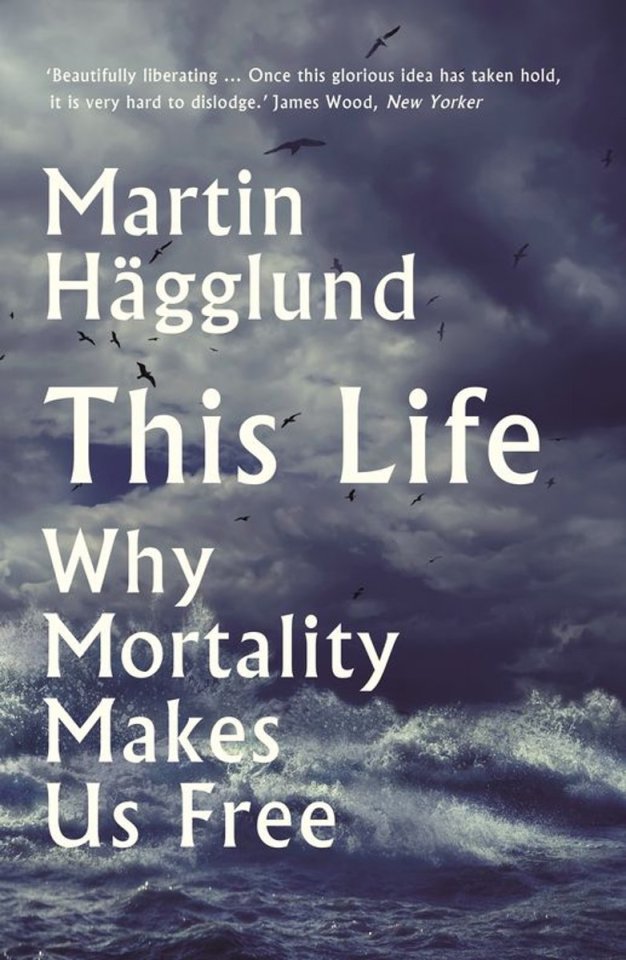
postcyberpunkstompf:
01 ken liu (ed) "broken stars: contemporary chinese sf in translation" (2019)

02 cory doctorow "radicalized" (2019)
03 dave hutchinson "the return of the incredible exploding man" (2019)
+ dave hutchinson "nomads" (2019)
+ dave hutchinson "thumbprints" (1978)
+ dave hutchinson "torn air" (1980)
+ dave hutchinson "the push" (2009)
+ dave hutchinson "the villages" (2002)
... damn that elusive "paradise equation" (1981) ...
04 tade thompson "rosewater" (2016)
+ tade thompson "rosewater insurrection" (2019)
+ tade thompson "rosewater redemption" (2019)
05 desirina boskovich (ed) "lost transmissions: the secret history of sf & f" (2019)

06 hannu rajaniemi & jacob weisman (eds) "the new voices of science fiction" (2019)
07 gardner dozois (ed) "the very best of the best: 35 years of the year's best science fiction" (2019)
08 jonathan strahan (ed) "the best science fiction & fantasy of the year, volume thirteen" (2019)
09 robert markeley "kim stanley robinson modern masters of sf" (2019)
10 allan kaster (ed) "the year's top hard sf stories 3" (2019)

11 olivier girard (ed) "bifrost 96 la revue des mondes imaginaires: william gibson" (2019)
12 mario guglielminetti "web is over. parabola ed esplosione di ubuweb, l'antiprofilo" (2019)
13 bryan thomas schmidt (ed) "infinite stars: dark frontiers" (2019)
14 baoshu "the redemption of time" [2011] (2019)
15 cixin liu "the supernova era" [2003] (2019)

16 l. x. beckett "gamechanger" (2019)
17 gareth l powell "fleet of knives" (2019)
18 chen qiufan "waste tide" [2013] (2019)
19 derek künsken "the quantum garden" (2019)
20 gregory benford "rewrite: loops in the timescape" (2019)
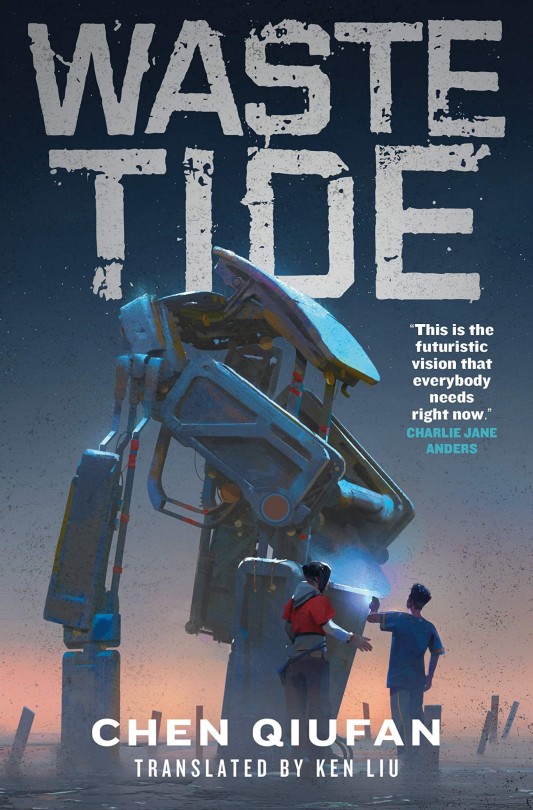
21 james s.a. corey "tiamat's wrath" (2019)
+ james s.a. corey "auberon" (2019)
22 jim al-khalili "sunfall" (2019)
23 peter f hamilton "salvation lost" (2019)
24 neal asher "the warship" (2019)
25 jonathan strahan (ed) "mission critical" (2019)

26 jack mcdevitt "octavia gone" (2019)
27 elizabeth bear "ancestral night" (2019)
28 ian mcdonald "moon rising" (2019)
29 carmen maria machado (ed) "the best american sf & f 2019" (2019)
30 valerie valdes "chilling effect" (2019)
31 simon morden "bright morning star" (2019)
+ s. j. morden "no way" (2019)
32 neil stephenson "fall or, dodge in hell" (2019)
33 graham edwards "string city" (2019)
klassikstompf:
01 arno schmidt "bottom's dream" [1970] (2016) ... & still reading ...
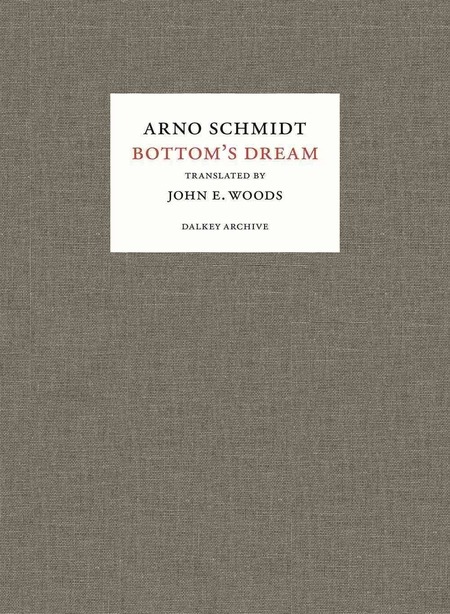
02 jorge luis borgès "borgès restored (the author's preferred translations)" (2016)
03 julie orringer "the flight portfolio" (2019)
+ julie orringer "the invisible bridge" (2010)
04 pola oloixarac "savage theories" (2017)
+ pola oloixarac "dark constellations" (2019)
05 simon critchley "memory theatre" (2014)

06 gabriel josipovici "hotel andromeda" (2014)
07 david keenan "for the good times" (2019)
08 wg sebald "vertigo" [1990] (1999)
+ wg sebald "the emmigrants" [1992] (1996)
+ wg sebald "the rings of saturn" [1995] (1998)
+ wg sebald "austerlitz" (2001)
09 luis chitarroni "the no variations "diary of an unfinished novel" [2007] (2013)
10 julián ríos "larva: a midsummer night's babel" [1983] (1991)

11 césar aira "birthday" [2001] (2019)
+ césar aira "three novels" [1990-2000-1997] (2018)
12 tom mole "the secret life of books" (2019)
13 lucy ives "loudermilk or the real poet or the origin of the world" (2019)
14 lászló krasznahorkai "baron wenckheim's homecoming" [2016] (2019)
15 lucy ellmann "ducks, newburyport" (2019)

16 lars iyer "nietzsche & the burbs" (2019)
17 d harlan wilson "the psychotic dr. schreber" (2019)
18 andrew gallix (ed) "we'll never have paris" (2019)
19 chris kelso (ed) "i transgress" (2019)
20 john crowley "the solitudes" [1987] (2007)
+ john crowley "love & sleep" (1994)
+ john crowley "daemonomania" (2000)
+ john crowley "endless things" (2007) ... (the aegypt cycle)

polarstompf:
01 carlos ruiz zafón "the labyrinth of the spirits" [2017] (2018)

02 volker kutscher "the fatherland files" [2012] (2019)
03 andrea camilleri "the overnight kidnapper" [2015] (2019)
+ andrea camilleri "the other end of the line" [2016] (2019)
04 mick herron "joe country" (2019)
+ mick herron "this is what happened" (2018)
+ mick herron "nobody walks" (2015)
05 john le carré "agent running the field" (2019)

06 guillaume musso "la vie secrète des écrivains" (2019)
07 luke mccallin "the man from berlin" (2013)
+ luke mccallin "the pale house" (2014)
+ luke mccallin "the divided city" (2016)
09 henry porter "brandenburg" [2005] (2019)
+ henry porter "firefly" (2018)
+ henry porter "white hot silence" (2019)
10 mitch silver "the bookworm" (2018)
+ mitch silver "in secret service" (2007)
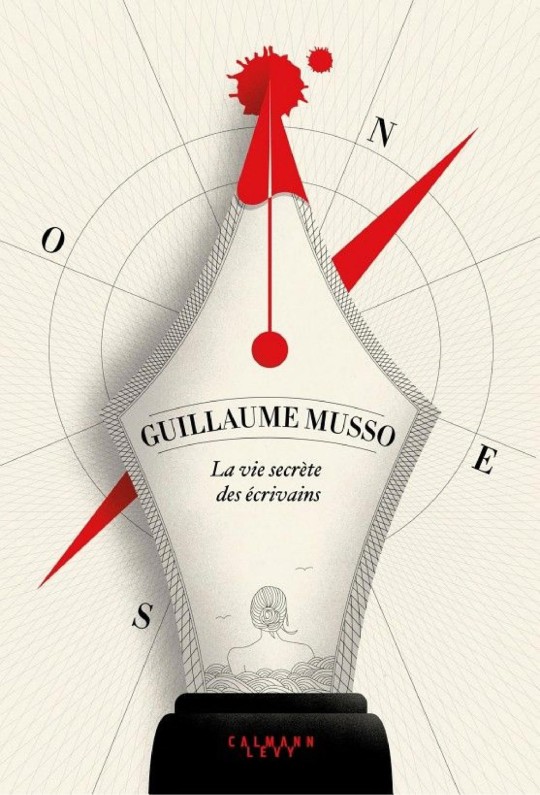
11 alan judd "the accidental agent" (2019)
12 philip kerr "metropolis" (2019)
13 ian rankin "westwind" (2019)
14 jo nesbø "the knife" (2019)
15 david hewson "devil's fjord" (2019)

16 barry forshaw "crime fiction: a reader's guide" (2019)
17 a.a. dhand "one way out" (2019)
18 martin holmén "clinch: the stockholm trilogy 01" (2016)
+ martin holmén "down for te count: the stockholm trilogy 02" (2017)
+ martin holmén "slugger: the stockholm trilogy 03" (2019)
19 michael kestemont "de zwarte koning" (2019)
20 soren sveistrup "the chestnut man" [2018] (2019)
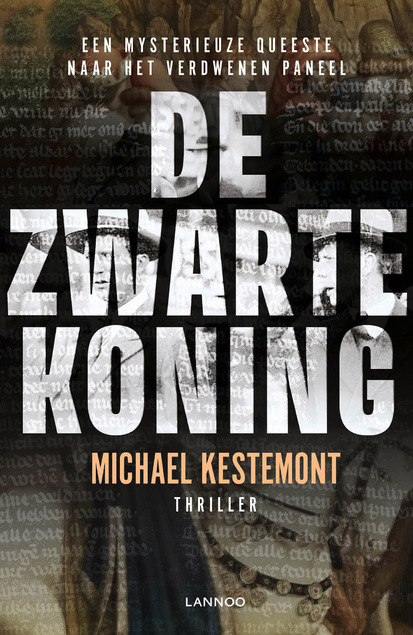
21 tim mason "the darwin affair" (2019)
22 patrick conrad "good night, charlie" (2019)
23 chris pavone "the paris diversion" (2019)
24 dov aflon "a long night in paris" (2019)
25 arne dahl "hunted" [2017] (2019)

RIP ANDREA CAMILLERI !
gedächtnisstompf:
01 martin hägglund "this life: why mortality makes us free" (2019) /
"this life: secular faith & spiritual freedom" (2019)

02 derrida "la vie la mort: séminaire (1975-1976)" (2019)
03 jean-luc nancy "derrida, suppléments” (2019)
04 jean-françois bouthors et jean-luc nancy "démocratie! hic et nunc" (2019)
05 hannah arendt "de vrijheid om vrij te zijn" (2019)
+ hannah arendt "nous autres réfugiés" (2019)
06 mckenzie wark "capital is dead": is this something worse?" (2019)
07 johan schokker & tim schokker
"extimiteit: jacques lacan's terugkeer naar freud" (2000)
08 gerhard richter & ann schmock (eds) "give the word:
responses to werner hamacher's 95 theses on philology" (2019)
09 ranja n gosh "philosophy & poetry: continental perspectives" (2019)
10 shoshana zuboff "the age of surveillance capitalism" (2019)
11 kate zambrano "screen tests: stories & other writing" (2019)
12 daniele carluccio "roland barthes lecteur" (2019)
13 jean-clet martin "la philosophie de gilles deleuze" (2019)
14 mitchell dean & daniel zamora "le dernier homme et la fin de la révolution: foucault apr��s mai 68" (2019)
15 arnon grunberg "vriend & vijand: decadentie, ondergang & verlossing" (2019)
16 kwami anthony appiah
"de leugens die ons verbinden: een nieuwe kijk op identiteit" [2018] (2019)
17 quentin meillassoux "science fiction & extro-science fiction" (2015)
18 roberto calasso "het onbenoembare verleden" [2017] (2019)
19 lydia davis "essays" (2019)
20 denise riley "time lived, without its flow" (2019)
poesisstompf:
zoë skoulding "footnotes to water" (2019)
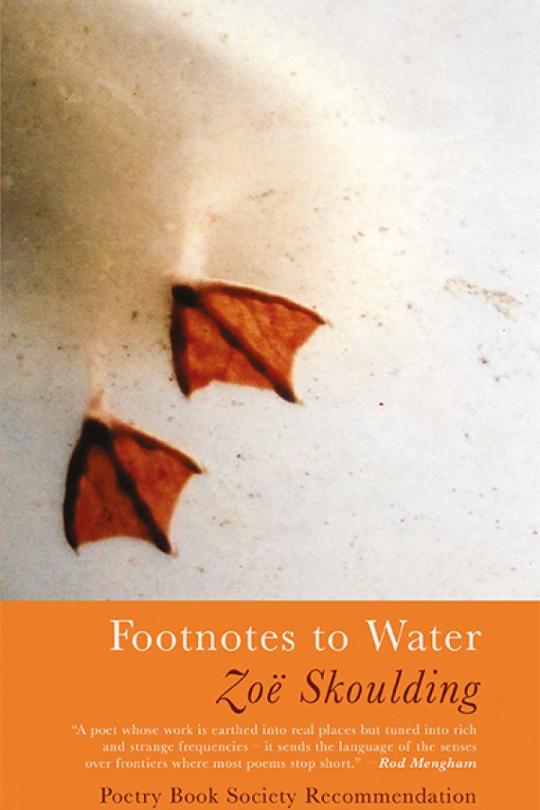
platterstompf:
01 rick moody "on celestial music, and other adventures in listening" (2012)
02 yann courtiau "frictions:
ce que la littérature a fait à la musique et ce que la musique a en a fait" (2019)
03 vivien goldman "revenge of the she-punks:
a feminist music history from poly styrene to pussy riot" (2019)
04 garrígos, triana & guerra "god save the queens: pioneras del punk" (2019)
05 jon savage "this searing light, the sun & everything else:
joy division the oral history" (2019)

06 richard beck "trains, jesus, and murder: the gospel according to johnny cash"
07 mark lanegan "sleevenotes" (2019)
08 jason williamson "jason williamson's house party: sleaford mods 2014-2019" (2019)
09 gallix, hill, & rose (eds) "love bites: fiction inspired by pete shelley" (2019)
10 greg laurie "johnny cash the redemption of an american icon" (2019)

11 marc vos & toon loenders "siglo xx:
opdat de dood ons levend vindt & het leven ons niet doodt" (2019)
12 david sandilands & david keenan "go ahead & drop the bomb
(memorial device pamflet)" (2019)
13 guillaume belhomme "pop fin de siècle" (2019)
14 chris bohn (ed) "the wire" (magazine) (2019)
15 sylvain sylvain "there's no bones in ice cream:
sylvain sylvain's story of the new york dolls" (2018)

16 debbie harry "face it" (2019)
17 jaime gonzalo "poder freak: una crónica de la contracultura vol III" (2014)
18 matthew bower & samantha davies "talisman angelical" (2017)
19 darryl w bullock "the world's worst records: an arcade of audio atrocity vol I" (2013)
+ darryl w bullock "the world's worst records: another arcade of audio atrocity vol II" (2015)
20 steve zisson (ed) "a punk rock future" (2019) /
ivar muñoz-rojas "underground babilonia" (2019)

bilderstompf:
01 didier ottinger "bacon en toutes lettres" (2019)

02 antoni tàpies "cap braços cames cos" (2012)
+ antoni tàpies "mahlerei und graphik" (2011)
03 laura oldfield ford "savage messiah" (2019)
04 fred vermorel "dead fashion girl: a situationist detective story" (2019)
05 françois schuiten & jaco van dormael "le dernier pharaon" (2019)

06 ken krimstein "the three escapes of hannah arendt: the tyranny of truth" (2018)
07 erik bindervoet & saskia pfaeltzer "aldus sprach nietzsche's zuster" (2019)
08 anthony n fragola & roch c smith
"the erotic dream machine: interviews with alain robbe-grillet on his films" (2006)

cyclostompf:
01 bernard chambaz "petite philosophie du vélo" (2019)

02 filip osselaer "de man die doodging (vervolgens mosselen bestelde,
de rekening vroeg en verdween): el tarangu, josé manuel fuente" (2019)
03 peter schmink "de cultus van het lijden: een vrije oefening" (2006)
04 laurent willame "les lieux sacrés du cyclisme:
15 pélérinages à faire avant de crever" (2019)
05 jonas heyerick (ed) "bahamontes: uit liefde voor de stiel" [magazine] (2019)
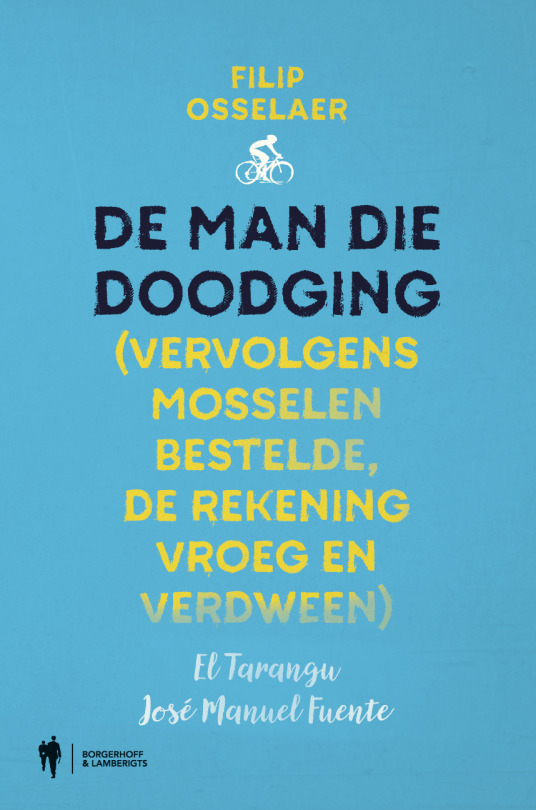
06 johnny vansevenant "1969, het jaar van eddy merckx" (2019)
07 edwin winkels "la vuelta: heroïsche verhalen uit de ronde van spanje" (2019)
08 frederik baeckelandt "fausto coppi (les héros 04)" (2019)
09 harry pearson "the beast, the emperor & the milkman:
a bone-shaking tour through cycling’s flemish heartlands" (2019)
10 peter cossins "the yellow jersey / le maillot jaune" (2019)

11 thijs zonneveld "het panini album" (2019)
12 thijs zonneveld "de fiets, de fiets & nog veel meer sportverhalen" (2019)
13 willy vangenechten "hoe word je een wielerfan (en blijf je er een)?" (2019)
some wissenschaftstompf & autres divertissements ...:
01 robert macfarlane "underland: a deep time journey" (2019)
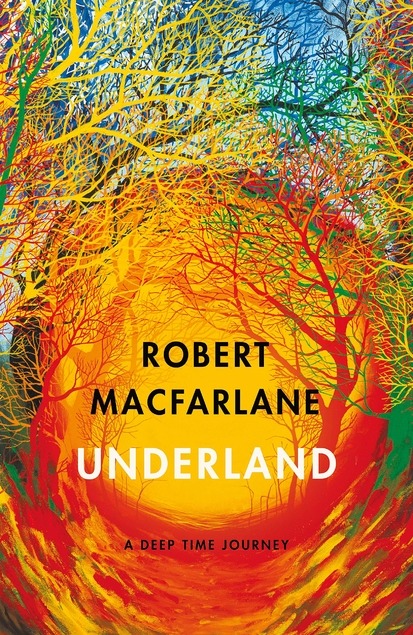
02 george van hal & ans hekkenberg "het kosmisch rariteitenkabinet" (2019)
03 josey waley-cohen "only connect: the difficult second quiz book" (2019)

… tsundoku !
may your home be safe from tigers,
leroy,
x
HNY!

... the annual out of control TBR pile ...

postcyberpunkstompf
ada hoffmann "the outside" (2019)
adrian tchaikovsky "children of ruin" (2019)
alastair reynolds "shadow captain" (2019)
+ alastair reynolds "permafrost" (2019)
annalee newitz "the future of another timeline" (2019)
charlie jane anders "the city in the middle of the night" (2019)
farah mendlesohn "the pleasant profession of robert a heinlein" (2019)gareth l powell "ragged alice" (2019)
greg egan "perihelion summer" (2019)
ian creasey "the shapes of strangers" (2019)
jo walton "lent" (2019)

kameron hurley "the light brigade" (2019)
karl schroeder "stealing words" (2019)
megan o'keefe "velocity weapon" (2019)
neil clarke (ed) "the eagle has landed: 50 years of lunar sf" (2019)
nina allan "the silverwind" (2019)
paul di filippo "aeota" (2019)
peter swirski "stanislaw lem: philosopher of the future" (2019)
+ peter swirski & waclaw m osadnik (eds) "lemography: stanislaw lem in the eyes of the world" (2019)
richard kadrey "the grand dark" (2019)
rudy rucker "million mile road trip" (2019)
simon ings "the smoke" (2019)
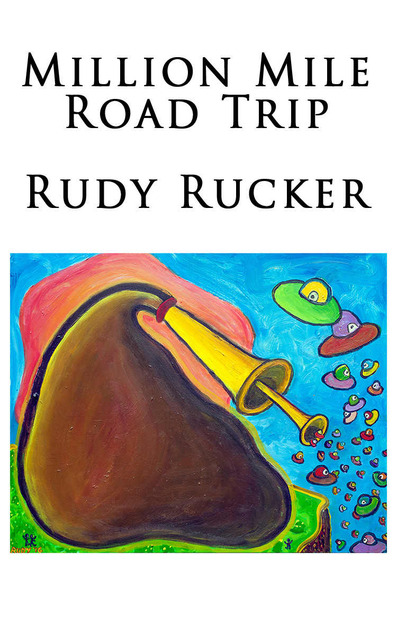
klassikstompf
alex landragin "crossings" (2019)
enrique vila-matas "mac's problem" [2017] (2019)
joseph scapellato "the made-up man" (2019)
kevin breatnach "tunnelvision" (2019)
michel houellebecq "serotonin" (2019)
nell zink "doxology" (2019)
roberto bolaño "the spirit of science fiction: a novel" (2019)
samanta schweblin "mouthful of birds" (2019)
sergio pitol "mephisto's waltz: selected short stories" (2019)
will eaves "murmur" (2019)
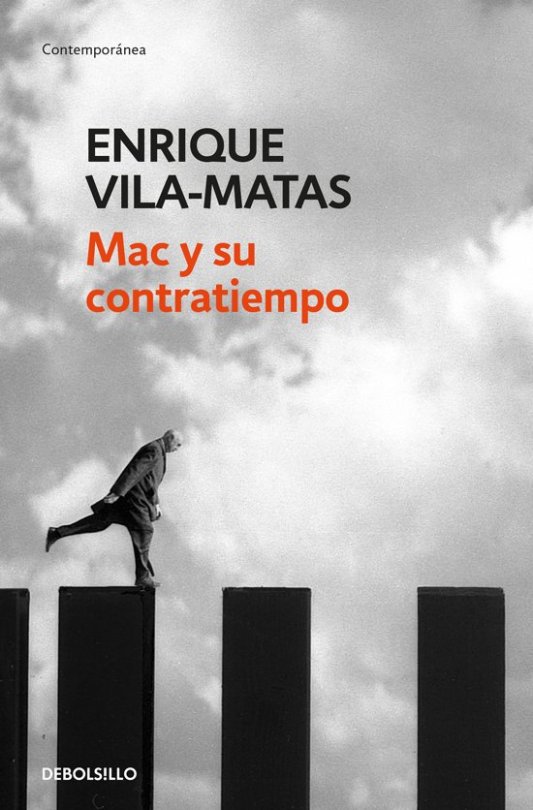
polarstompf
johan op de beek "het complot van laken" (2019)
jon steinhagen "the hanging artist" (2019)
juli zeh "empty hearts" (2019)
max hertzberg "operation oskar" (2019)
+ max hertzberg "berlin centre" (2019)
peter robinson "many rivers to cross" (2019)
tony belloto "bellini & the sphinx" [1995] (2019)

.
.
.

24 notes
·
View notes
Text
Cada plegaria para poder ser tal tiene que ser una plegaria por la no-plegaria y tiene que ser ella misma una no-plegaria mientras lo lleva a cabo. Una plegaria y ninguna, un ruego por la plegaria mientras lo lleva a cabo. Una plegaria y ninguna, un ruego por la plegaria y su interrupción, una plegaria contra la plegaria, así la dialéctica cristiana-ocasional de la plegaria deja de ser siempre en el camino hacia sí misma y se convierte en la rítmica de su cesuración. Desde el comienzo no puede sino estar librada a otro que no es a ella misma y exponerse en ese otro: suspender y fracasar. Solo así puede articularse en la plegaria el deseo que aun es el deseo de salvar lo fracasado, y salvarlo como fracasado en su fracaso.
—Werner Hamacher, «Plegarias del arco» en Lingua amissa. Traducción de Laura S. Carugati.
11 notes
·
View notes
Text
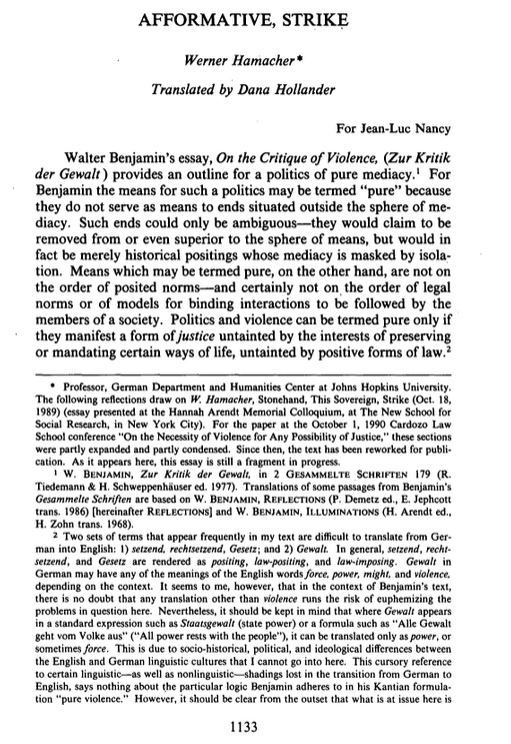
Ah, pour l'art pour!
1.
Das Gerücht hat Dirk Baecker einmal im Kunstverein Malkasten verbreitet: Erich Honecker oder Walter Ullbricht habe bei einer Kunstausstellung etwas durcheinandergebracht, als er sich über die bürgerliche und moderne Kunst wunderte. Gut, die hat aber auch was durcheinandergebracht.
Nicht ah, l'art pour l'art soll er gesagt haben. Er soll ah, pour l'art pour oder ah, pour la pour gesagt haben. Irgendwas lingte. Dafür steht die Geschichte, etwas purrte aus seiner Geschichte.
Wie das so ist bei Gerüchten, die sind immer ein bisschen stille Post und ich höre auch nie so richtig hin. Vielleicht hat er (Dirk Baecker oder Erich Honecker oder Walter Ullbricht) in echt ah, pour le pur gesagt. So oder so war es verkehrt, aber sicher nicht das erste Mal.
2.
So rein ist die reine Kritik nun auch wieder nicht. So rein sind die reinen Mittel nun auch wieder nicht. Wem, wenn nicht Kant oder Benjamin oder Hamacher, müsste man das nicht sagen? Kritik der reinen Vernunft ist kritisch, solange sie kritisiert, und dabei reine Vernunft, solange sie kreist.
Pourrait. Waiting for pommes, niemand hat die Absicht jemanden zu verführen oder gar zu veräppeln und doch gibt's immer wieder Vernünftpüree.
1 note
·
View note
Text
From fireballs in the sky to a shark in the stars: the astronomical artistry of Segar Passi

Elsie Passi, Author provided
When Uncle Segar Passi watches the position of the setting Sun from his front patio, he notes its location and relates that to the time of year and changes in seasonal cycles.
What he sees translates into his artworks. They are visually stunning, a rich tapestry of colours jumping off the frame with a palate that easily rivals Vincent van Gogh. This is reflected in the many awards he has garnered over the years.
Lidlid by Segar Passi (2011) Queensland Art Gallery
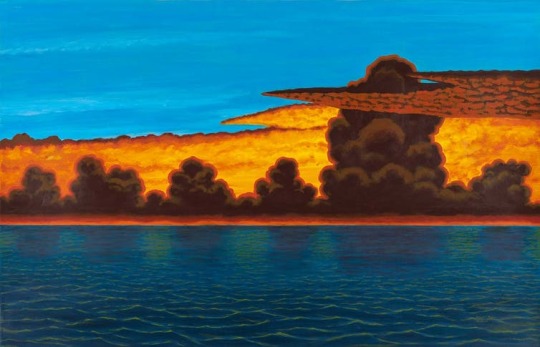
His artistic talent is matched only by the depth of his wisdom and cultural knowledge, which he teaches through his practice.
An island home
Turning 79 this year, Uncle Segar is a senior Meriam elder and a Dauareb man, meaning his community is originally from Dauar, the larger of the two small islands off the coast of Mer (the other being Waier) in the eastern Torres Strait.
The volcanic trio of islands are collectively known as the Murray Island group, and sit at the very tip of the Great Barrier Reef.
The Murray Island group in the eastern Torres Strait: Mer (foreground), Dauar (upper right) and Waier (upper left). Duane Hamacher

Professor Martin Nakata, a Torres Strait Islander and Pro-Vice Chancellor at James Cook University, brought me to Mer years ago to help the community document its star knowledge for education and community programs.
We stood on the beach near Uncle Segar’s house, watching the sunset near the double-hilled island of Dauar when he told me:
That place has powerful magic. If you want to learn about traditional star knowledge, you ask those elders. They’re the big dogs.
Looking to the artworks on the wall in Uncle Segar’s workshop, I noticed a plethora of subtle characteristics encoded within each one.
I know his artistic style is unique and aesthetically gorgeous, but I also know that every colour, brushstroke, motif and design has meaning. I see a painting showing a crescent Moon with the cusps pointing up. Above it are puffy cumulus clouds and the moonlight reflected in the choppy waters.
Kerkar Meb I (Left) and II (right), 2011. These paintings by Segar Passi show the changing orientation of the crescent Moon, which informs seasonal weather patterns. Segar Passi. QAGOMA, Brisbane.

Another painting, which looks nearly identical from a distance, shows the Moon tilted at an angle. The clouds above are cirrus, and the reflection of moonlight is clear and strong on the calm, still water.
In his characteristic soft voice, Uncle Segar explained the meaning behind this pair of paintings.
Every month there is a New Moon at a different angle. Did you ever notice this?
He explained how the New Moon (kerker meb) can tell you about the changing seasons if you look at the angle of its tilt. When the cusps are pointing up (Meb metalug em), it is the dry season, the Sager.
You will see large cumulus clouds in the evening sky and the water is choppy. When the cusps point at an angle (Meb uag em), the water is calm and you see cirrus clouds. This is the wet monsoon season, the Kuki. He pointed to the painting:
If the water looks rough and the Moon is pointed up, you know the winds will die down and the next day the water will be fine.
The art of knowledge
The paintings are a medium through which complex systems of knowledge are passed down. These systems are based on generations of collective observation, deduction and interconnection – a longstanding system of science.
Read more: The Moon plays an important role in Indigenous culture and helped win a battle over sea rights
Uncle Segar is an expert on clouds and weather, the plants and animals, the sea, land, and the sky. His knowledge is as deep as his artworks are captivating.
The self-taught artist developed his style in the 1960s and has since won several major awards for his work, gaining an international profile through his raw talent, complex works and lovely personality. But his passion is for local community, both on Mer and across the Torres Strait.
Uncle Segar’s work has appeared in local school books and seasonal calendars about traditional knowledge. He has also worked closely with me and other academics over the years, sharing Meriam Star Knowledge and co-authoring several research papers.
These include publications about traditional ways of interpreting the twinkling stars, the role of astronomy in song and dance, and the relationship between bright meteors and death rites in the Torres Strait.
Uncle Segar is currently contributing to a major book on Indigenous astronomy for a global audience and has been featured in recent Indigenous astronomy articles in Cosmos magazine. His knowledge has even been written into the Australian National Curriculum for schools across the country.
The flying spirits
This knowledge has found its way into films by some of the world’s most critically acclaimed directors. Members of the Mer community performed the Maier (Shooting Star) dance for the 2020 Werner Herzog and Clive Oppenheimer film Fireball: Visitors from Darker Worlds.
youtube
Fireball, Visitors from Darker Worlds.
Maier is a term from the Meriam Mir language referring to fireballs (exceptionally bright meteors), which are seen as a celestial personification of a recently deceased person’s spirit flying to Beig, the land of the dead.
The brightness, trajectory and sound of a Maier all have special meaning. If the Maier breaks into fragments and you see sparks fall (uir-uir), you know that person left behind a large family.
The trajectory of the Maier tells you where that person is from. And when you hear the booming sound (dum) as the fireball explodes, it tells you that person has arrived at their destination.
The Maier dance is originally from Mer but had not been performed on the island since 1969. In late 2019, the community approved Herzog and Oppenheimer to film the dance on Mer.
Led by Meriam elder Alo Tapim, four local dancers were taught the kab kar (sacred dance) and performed it on the beach at sunset just hours later, with cameras rolling. The segment you see at the end of the film is the first time the dance had been performed on Mer in 50 years.
A ‘Behind-the-Scenes’ photo of the community performing the Maier Dance on Mer at dusk for the film ‘Fireball’ in 2019. Duane Hamacher

Name in the stars
In 2020, his lifetime of work and his contributions to astronomy were recognised when the International Astronomical Union renamed the asteroid “1979 MH4” as “7733 Segarpassi”.
This is a 1.9km-wide asteroid in the main asteroid belt between Mars and Jupiter. It is 2.4 times farther from the Sun than Earth is, and takes 3.7 years to orbit the Sun.
Read more: From 7809 Marcialangton to 7630 Yidumduma: 5 asteroids named after Aboriginal and Torres Strait Islander people
Uncle Segar’s important contributions to culture and science are also encapsulated in the newly released commemorative coin “The Shark in the Stars”.
Released on March 4, 2021 by the Royal Australian Mint, this non-circulating coin features Uncle Segar’s artwork. It is the third and final instalment of the Star Dreaming series, and was so popular all 5,000 coins sold out within two hours.
Beizam, the Shark in the Stars. Uncirculated $1 coin released by the Royal Australian Mint. Royal Australian Mint

The celestial shark is called Beizam, a Meriam constellation formed by the bright stars of the Big Dipper (part of the Western constellation Ursa Major, the Big Bear). It traces out the head, body, fins and tail of the shark.
The changing position of the shark in the northern skies throughout the year is a seasonal marker that notes shifting seasons, when to hunt turtle, when to harvest yams, and informs the observer about the behaviour of the shark itself.
Read more: New coins celebrate Indigenous astronomy, the stars, and the dark spaces between them
When the nose of Beizam touches the horizon at sunset, sharks are feeding on sardines that swim in tight ribbons close to the shore. This occurs during the Sager, which can be a dangerous time to go for a dip.
Later in the year, as the shark dives below the horizon at dusk, you will see the first lightning of the coming monsoon.
Meriam people teach that water rushes through Beizam’s gills as it dives into the sea on the horizon, casting water into the sky which falls as the rains of the wet season, the Kuki.
Uncle Segar Passi continues to share his knowledge with the world, benefiting his community and the next generation of Meriam scholars. And we are exceptionally lucky and honoured to continue learning from Elders like him.
Read more: A shark in the stars: astronomy and culture in the Torres Strait

Duane W. Hamacher, Associate Professor, The University of Melbourne
This article is republished from The Conversation under a Creative Commons license. Read the original article.
0 notes
Link
Werner,
Werner, toi ici avec nous, toi si proche et si lointain, aussi lointain que proche,
Werner, plus loin…
Werner je suis sans parole – et tu dis aussitôt : « Qui est sans parole a dans sa privation même quelque chose de la parole ».
Quelque chose ou peut-être tout vas-tu dire car on ne parle qu’à partir du manque de parole et on cherche sa propre disparition.
22 notes
·
View notes
Text
Literature and Philosophy
MA IN LITERARY STUDIES
Literature and Philosophy (EN71021A): Course Outline Spring 2019
Tutor: Julia Ng
Teaching Mode: 2-hour seminar
Seminar Wednesday 9-11
St James Hatcham G02
NB: Please acquire a print copy of Walter Benjamin’s Origin of German Tragic Drama, trans. J. Osborne (Verso, 1998/2009), as we will be studying this text in its entirety. Other materials for this course will be posted to the course’s learn.gold page.
Week 1, Wednesday 16
th
January – Introduction; “intention” in Brentano and Husserl
Introductory discussion
Franz Brentano, “The Distinction between Mental and Physical Phenomena,” in Psychology from an Empirical Standpoint [1874], trans. A. C. Rancurello, D. B. Terrell and L. L. McAlister (London: Routledge & Kegan Paul, 1995), Bk. 2, chap. 1, pp. 59-77.
Edmund Husserl, “Philosophy as a Rigorous Science," in Phenomenology and the Crisis of Philosophy, trans. Quentin Lauer (Harper & Row, 1965), section on “Naturalistic Philosophy,” pp. 79-122.
Week 2, Wednesday 23th January – Husserl
Edmund Husserl, “Philosophy as a Rigorous Science," in Phenomenology and the Crisis of Philosophy, trans. Quentin Lauer (Harper & Row, 1965), excerpt from “Historicism and Weltanschauung Philosophy,” pp. 122-129.
Edmund Husserl, Ideas Pertaining to a Pure Phenomenology and to a Phenomenological Philosophy, I, trans. F. Kersten (Martinus Nijhoff, 1983), §§87-90, 93-95.
Week 3, Wednesday 30th January – Benjamin
Benjamin, OGT, “Epistemo-Critical Prologue”
References
Plato, Symposium
Scheler, “On the Tragic”
Wek 4, Wednesday 6th February – Benjamin
Benjamin, OGT, “Trauerspiel and Tragedy,“ I
References
Schmitt, Political Theology
Gryphius, Leo Armenius
Calderon, Life is a Dream
Week 5, Wednesday 13th February – Benjamin
Benjamin, OGT, “Trauerspiel and Tragedy,“ II
References
Nietzsche, The Birth of Tragedy
Lukács, Soul and Forms
Rosenzweig, The Star of Redemption
Scheler, “On the Tragic”
Benjamin, “Fate and Character”; “Toward the Critique of Violence”
Week 6, Wednesday 20th February
Tutorial Week – No seminar
Week 7, Wednesday 27th February – Benjamin
Benjamin, OGT, “Trauerspiel and Tragedy,“ III; „Allegory and Trauerspiel,“ I
References
Shakespeare, Hamlet
Panofsky and Saxl on Dürer’s Melancholia I
Giehlow on Melancholia I; The Humanist Interpretation of Hieroglyphs
Warburg
Freud, “Mourning and Melancholia”
Week 8, Wednesday 6th March – Benjamin
Benjamin, OGT, “Allegory and Trauerspiel,“ II and III
References
Benjamin, “On Language as Such and on the Language of Man”; “The Role of Language in Trauerspiel and Tragedy”; “Trauerspiel and Tragedy”
Gryphius, Leo Armenius
Week 9, Wednesday 13th March – Adorno
Adorno, “The Actuality of Philosophy” (May 2, 1931), in Telos 31 (1977), 120-133.
Adorno, “The Idea of Natural History” (1932), in Telos 60 (1984), 111-124.
Week 10, Wednesday 20th March – Adorno
Adorno, “III.2 World Spirit and Natural History,” in Negative Dialectics, trans. E.B. Ashton, Continuum, 1973, pp. 300-360.
Week 11, Wednesday 27th March – Conclusion
General discussion
Preparatory Reading
Gryphius, Leo Armenius
Calderon, Life Is A Dream
Shakespeare, Hamlet
Hofmannsthal, The Tower
Further Reading
Benjamin
On Language as Such and on the Language of Man (1916)
The Role of Language in Trauerspiel and Tragedy (1916)
Trauerspiel and Tragedy (1916)
Fate and Character (1919)
Toward the Critique of Violence (1921)
Calderon's El mayor monstrue, los celos and Hebbel's Herodus and Mariamne (1923)
General
Adorno, Theodor. "Portrait of Walter Benjamin," in: Prisms. Trans. Samuel and Shierry Weber. MIT Press, 1981.
Adorno, Theodor. Against Epistemology: A Metacritique. Trans. Willis Domingo. Oxford: Blackwell, 1982.
Adorno, Theodor, and Walter Benjamin. The Complete Correspondence, 1928-1940. Ed. Henri Lonitz. Trans. Nicholas Walker. Cambridge, MA: Harvard UP, 1999.
Agamben, Giorgio. Homo Sacer: Sovereign Power and Bare Life, Stanford UP, 1998.
Cascardi, Anthony J. "Comedia and Trauerspiel: On Benjamin and Calderón." Comparative Drama 16:1 (1982), 1-11.
Cobb-Stevens, Richard. “Husserl on Eidetic Intuition and Historical Interpretation,” American Catholic Philosophical Quarterly 66 (1992): 261–75.
Comay, Rebecca. "Mourning Work and Play," in Research in Phenomenology 23 (1993), pp. 105-130.
Drummond, John. “Husserl on the Ways to the Performance of the Reduction,” Man and World 8 (1975): 47–69.
Drummond, John. “The Structure of Intentionality,” in The New Husserl, ed. D. Welton (Bloomington: Indiana University Press, 2003), 65–92.
Derrida, Jacques. "Force of Law."
Fenves, Peter. "Marx, Mourning, Messianity," in: Hent de Vries/Samuel Weber (Hg.): Violence, Identity and Self-Determination, Stanford, 1997, 253–270.
Fenves, Peter. "Tragedy and Prophecy in Benjamin’s 'Origin of the German Mourning Play,'" in: Arresting Language. From Leibniz to Benjamin, Stanford UP, 2001, 227–248.
Foster, Roger. Adorno: The Recovery of Experience. SUNY Press, 2007.
Freud, Sigmund. "Mourning and Melancholia," The Standard Edition of the Complete Psychological Works of Sigmund Freud, XIV. The Hogarth Press, 1957, pp. 237-258.
Friedlander, Eli. "On the Musical Gathering of Echoes of the Voice: Walter Benjamin on Opera and the Trauerspiel." The Opera Quarterly, vol. 21 no. 4 (2005), pp. 631-646.
Geulen, Eva. The End of Art : Readings in a Rumor after Hegel. Stanford University Press, 2006.
Giehlow, Karl, and Robin Raybould. The Humanist Interpretation of Hieroglyphs in the Allegorical Studies of the Renaissance with a Focus on the Triumphal Arch of Maximilian I. Brill, 2015.
Hamacher, Werner. "Guilt History."
Hanssen, Beatrice. Walter Benjamin's Other History : of Stones, Animals, Human Beings, and Angels. University of California Press, 1998.
Hanssen, Beatrice. "Philosophy at Its Origin: Walter Benjamin’s Prologue to the 'Ursprung des deutschen Trauerspiels,'" in: Modern Language Notes 110 (1995), 809–833.
Haverkampf, Hans-Erhard. Benjamin in Frankfurt : Die Zentralen Jahre 1922-1932. Societäts-Verlag, 2016.
Helmling, Steven. "Constellation and Critique: Adorno's Constellation, Benjamin's Dialectical Image." Postmodern Culture 14:1 (2003).
Johnson, Barbara, The Wake of Deconstruction, Cambridge, Mass, 1994.
Johnson, Christopher D. “Configuring the Baroque: Warburg and Benjamin.” Culture, Theory and Critique, vol. 57, no. 2, 2016, pp. 142–165.
Kantorowicz, Ernst H. The King's Two Bodies : a Study in Mediaeval Political Theology. Princeton University Press, 1997.
Klibansky, Raymond; Panofsky, Erwin; Saxl, Fritz. Saturn and Melancholy : Studies in the History of Natural Philosophy, Religion, and Art. Basic Books, 1964.
Lacan, Jacques. "Desire and the Interpretation of Desire in Hamlet," in: Shoshana Felman (ed.): Literature and Psychoanalysis. The Question of Reading: Otherwise, Baltimore, 1982, 11–52.
Lindner, Burkhardt. "Habilitationsakte Benjamin. Über ein 'akademisches Trauerspiel' und über ein Vorkapitel der "Frankfurter Schule" (Horkheimer, Adorno)/"Walter Benjamins's attempt of a Habilitation. On an 'academic Trauerspiel' and on other preliminaries of the "Frankfurter Schule" (Horkheimer, Adorno)." In: Zeitschrift für Literaturwissenschaft und Linguistik 14.53 (1984): 147-166.
Lukács, György. Soul and Form. MIT Press, 1978.
Lukács, György. Theory of the Novel.
Marin, Louis. Food for Thought. Johns Hopkins University Press, 1997.
McFarland, James. “Presentation.” Constellation: Friedrich Nietzsche and Walter Benjamin in the Now-Time of History. Fordham University Press, 2012, pp. 67-102 (Chapter 2).
McLaughlin, Kevin. "Benjamin's Barbarism." The Germanic Review: Literture, Culture, Theory, 81:1 (2006), 4-20.
Menke, Christoph, and James. Phillips. Tragic Play : Irony and Theater from Sophocles to Beckett. Columbia University Press, 2009.
Merback, Mitchell B. Perfection's Therapy : an Essay on Albrecht Dürer's Melencolia I. Zone Books, 2017.
Miller, J. Hillis. »The Two Allegories«, in: Morton Bloomfield (ed.): Allegory, Myth and Symbol, Cambridge, 1981, 355–370.
Mininger, J. D., and Jason Michael Peck. German Aesthetics : Fundamental Concepts from Baumgarten to Adorno. Bloomsbury, Bloomsbury Academic, 2016.
Nägele, Rainer. Theater, Theory, and Speculation: Walter Benjamin and the Scenes of Modernity, Baltimore, 1991.
Newman, Jane O. Benjamin's Library: modernity, nation, and the Baroque. Cornell UP, 2011.
Newman, Jane O. "Tragedy and 'Trauerspiel' for the (Post-)Westphalian Age." In: Renaissance Drama 40 (2012), pp. 197-208.
Newman, Jane. “Enchantment in Times of War: Aby Warburg, Walter Benjamin, and the Secularization Thesis.” Representations, vol. 105, no. 105, 2009, pp. 133-0_4.
Nietzsche, The Birth of Tragedy
Pensky, Max. Melancholy Dialectics: Walter Benjamin and the Play of Mourning. U Mass Press, 1993.
Plato, Symposium.
Rosenzweig, Franz, and Barbara Ellen Galli. The Star of Redemption. University of Wisconsin Press, 2005.
Scheler, Max. "On the Tragic." CrossCurrents 4.2 (1954), 178-191.
Schmitt, Carl, et al. Hamlet or Hecuba : the Intrusion of the Time into the Play. Telos Press, 2009.
Schmitt, Carl. Political Theology : Four Chapters on the Concept of Sovereignty. University of Chicago Press, 2005.
Szondi, Peter. An Essay on the Tragic. Stanford University Press, 2002.
Weber, Samuel. Benjamin's -Abilities. Harvard University Press, 2008.
Willard, Dallas. “The Paradox of Logical Psychologism: Husserl’s Way Out,” American Philosophical Quarterly 9 (1972): 94–100.
Woodfield, Richard (ed.) Art history as cultural history: Warburg's projects. G+B Arts International, 2000.
Learning Outcomes
- You will have a grasp of the place of literature in the modern Continental philosophy tradition.
- You will have a good understanding of how this tradition challenges and transforms Classical philosophical conceptions of literature.
- You will be able to expound and analyse the textual and conceptual styles of the three key thinkers on the course.
- You will have a sound grasp of the literature of and on both the broad relationship between literature and philosophy, and the three specific thinkers addressed on the module.
- You will be able to use the ideas and texts explored in the module to inform your readings in literary and cultural texts.
Assessment Criteria
- Students should show a clear command of traditional conceptions of the literary in the history of philosophy, and of how the modern Continental tradition challenges these.
- Students should show a detailed critical knowledge of at least one of the module’s key thinkers’ ideas.
- Students should show a knowledge and capacity to use a good range of secondary literature on both general issues in the field and on the specific thinkers and texts they address.
- Students should be able to read the relevant texts from both literary critical and conceptual perspectives.
- Students should show an awareness of the relevance of the issues and texts studied on the course to contemporary debates in literary theory.
9 notes
·
View notes